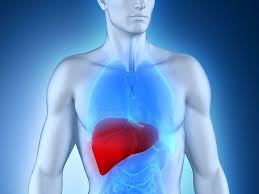
Breaking News
 In a jaw-dropping revelation, Sec. Brooke Rollins found 5,000 DEAD PEOPLE getting SNAP,...
In a jaw-dropping revelation, Sec. Brooke Rollins found 5,000 DEAD PEOPLE getting SNAP,...
 ALERT: The Most Important Silver Update You'll See - Mike Maloney w/Alan Hibbard
ALERT: The Most Important Silver Update You'll See - Mike Maloney w/Alan Hibbard
 Interview 1987 – News You WON'T See On The BBC! (NWNW #609)
Interview 1987 – News You WON'T See On The BBC! (NWNW #609)
 Foreclosures & Evictions Are Increasing Every Single Month
Foreclosures & Evictions Are Increasing Every Single Month
Top Tech News
 Blue Origin New Glenn 2 Next Launch and How Many Launches in 2026 and 2027
Blue Origin New Glenn 2 Next Launch and How Many Launches in 2026 and 2027
 China's thorium reactor aims to fuse power and parity
China's thorium reactor aims to fuse power and parity
 Ancient way to create penicillin, a medicine from ancient era
Ancient way to create penicillin, a medicine from ancient era
 Goodbye, Cavities? Scientists Just Found a Way to Regrow Tooth Enamel
Goodbye, Cavities? Scientists Just Found a Way to Regrow Tooth Enamel
 Scientists Say They've Figured Out How to Transcribe Your Thoughts From an MRI Scan
Scientists Say They've Figured Out How to Transcribe Your Thoughts From an MRI Scan
 SanDisk stuffed 1 TB of storage into the smallest Type-C thumb drive ever
SanDisk stuffed 1 TB of storage into the smallest Type-C thumb drive ever
 Calling Dr. Grok. Can AI Do Better than Your Primary Physician?
Calling Dr. Grok. Can AI Do Better than Your Primary Physician?
 HUGE 32kWh LiFePO4 DIY Battery w/ 628Ah Cells! 90 Minute Build
HUGE 32kWh LiFePO4 DIY Battery w/ 628Ah Cells! 90 Minute Build
 What Has Bitcoin Become 17 Years After Satoshi Nakamoto Published The Whitepaper?
What Has Bitcoin Become 17 Years After Satoshi Nakamoto Published The Whitepaper?
Liver Damage Is a Growing Epidemic

According to the American Cancer Society,1 liver cancer affects an estimated 41,000 Americans each year, and prevalence is rising.2 Between 2000 and 2016, the annual death toll from liver cancer rose by 43 percent for men and 40 percent for women,3 killing more than 11,000 people in 2016.4 The five-year survival rate for localized liver cancer is 31 percent, while regional cancer that has spread to other organs and distant liver cancer have survival rates of just 11 percent and 3 percent respectively.
Globally, the liver cancer hepatocellular carcinoma (HCC) is the second leading cause of cancer death due to the high prevalence and difficulty of treatment. Researchers warn that by 2030, the global rate of liver cancer will double, affecting upward of 1.2 million.5
Other liver-related diseases such as cirrhosis and nonalcoholic fatty liver disease (NAFLD) are also becoming more prevalent. Between 2001 and 2013, the number of diagnosed cirrhosis cases nearly doubled,6 and deaths from cirrhosis increased by 65 percent between 1999 and 2016.7 The greatest increase (10.5 percent) was among those between the ages of 25 and 34, where alcoholic cirrhosis has become rampant.8,9
Excess Alcohol Consumption Is Driving Rising Rates of Liver Damage
According to researchers, the rise in cirrhosis mortality is entirely driven by excess alcohol consumption by young adults. While, historically, alcohol-related liver cirrhosis has been regarded as a condition that develops after two or three decades of heavy drinking, these newer statistics reveal it doesn't have to take that long at all, as it's now occurring in (and killing) 20- and 30-year-olds.
In the 25 to 34 age group, death from alcohol-related liver disease nearly tripled between 1999 and 2016. This increase parallels statistics10 showing a rise in binge drinking between 2002 and 2012. It also correlates with the global financial crisis in 2008, after which more people began dying from cirrhosis. Researchers believe financial worries and unemployment may have been significant contributing factors, causing more people to drink more heavily.
Cirrhosis (irreversible scarring of your liver) can also be caused by obesity, NAFLD and hepatitis, and can in turn lead to fatal liver failure and/or liver cancer. Men are particularly at risk, in large part because they're five times more likely to develop NAFLD than women.
Lifestyle factors such as diet, exercise, weight, smoking and alcohol consumption also play important roles in exacerbating (as well as reducing) your chances of developing some form of liver disease. People at increased risk also include those who have an autoimmune disease, chronic liver inflammation, and those whose livers have been damaged due to bouts of hepatitis B or C. The good news is that alcohol-related liver cirrhosis can be reversed if caught early enough — and provided you quit drinking.
Excess Sugar Consumption Drives Rising NAFLD Rates
While alcohol-related cirrhosis is driving up mortality rates, rising prevalence of NAFLD is contributing to the overall burden of liver-related diseases. In the case of NAFLD, the fatty liver occurs in the absence of significant alcohol consumption, and is driven instead by excess sugar, which is why this condition is now found even in young children.
NAFLD often has no symptoms, although it may cause fatigue, jaundice, swelling in the legs and abdomen, mental confusion and more. If left untreated, it can cause your liver to swell, called nonalcoholic steatohepatitis (NASH), and can lead to liver cancer or liver failure. As with alcohol-related cirrhosis, however, NAFLD can be reversed in its early stages by eating right and exercising.
Most importantly, you need to eliminate processed fructose and other added sugars from your diet. Fructose actually affects your liver in ways that are very similar to alcohol. Unlike glucose, which can be used by virtually every cell in your body, fructose can only be metabolized by your liver, as your liver is the only organ that has the transporter for it.

 Unbanked In A Connected World
Unbanked In A Connected World

